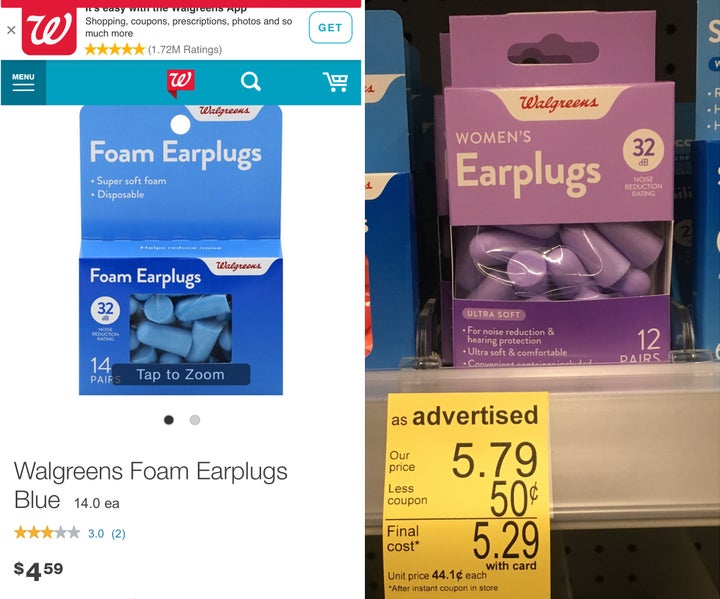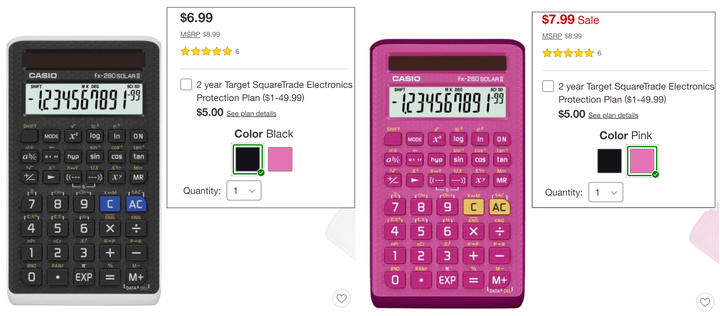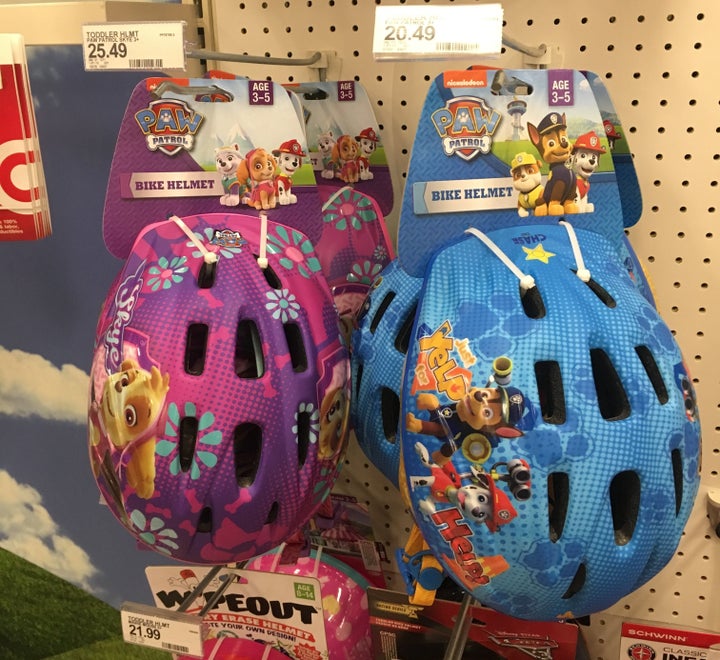The pink tax ― an adorable name for an insidious practice ― is something women deal with on a daily basis. You probably know that ladies pay more than men for a host of products and services, from razors to dry cleaning. In fact, it’s estimated that women pay an extra $1,300 per year for essentially the exact same products as men.
What’s surprising is how the pink tax extends to other random products that don’t seem to have any business being gendered. For example, as one Twitter user found, these women’s laxatives apparently cost more than the regular kind.
Was this a fluke, or are women really charged extra for the privilege of pooing with ease? It turns out, they sure are.
The reason? A special (pink) “comfort coating” that protects our extra-sensitive stomachs. Because, you know, periods and stuff. However, the active ingredients are the same.
So I continued combing the aisles of my local drug and department stores, as well as the internet at large, to find out if there were any other strange instances of a pink tax being imposed on seemingly gender-neutral products.
There were. Here are a few of the strangest examples.
Earplugs

Take these women’s earplugs. A search of the Walgreens website turns up the non-women’s version of these store-brand earplugs, which cost significantly less at $4.59 despite having the same noise reduction rating and containing two extra pairs.
What exactly makes these earplugs specifically for women? Is it the color alone, or do they feature a smaller design that better fits our delicate ear-holes? And if that’s the case, shouldn’t they cost less?
Hotel Kits
Though it seems these items are no longer carried in stores, Ace Hardware was stocking “his” and “hers” personal care kits for hotel patrons. Of course, the kits featured traditional gendered coloring, and the pink “hers” version cost $2.40 more. They contained the exact same items.
Calculators

Here’s another blatant example of a literal pink tax. Both of these calculators are exactly the same ― the only difference is the color. Even the manufacturer’s suggested retail price is listed as $8.99 for both versions. Yet the black calculator is regularly priced at an affordable $6.99 while the pink version is “on sale” for $7.99.
Ankle Support
Both of these ankle support wraps by Life Brand offer the same promise: “Helps provide support for mild sprains or strains.” Yet the “slimfit” women’s version — which assumes all women have slim ankles and that no men do — is a whopping $9 more expensive. Shouldn’t a “slimmer” product mean there’s less of it, and therefore cost less?
Kids’ Bike Helmets

Not even children are spared the pink tax. These two Paw Patrol bike helmets, both designed for toddlers ages 3 to 5 and featuring nearly identical artwork, are priced quite differently depending on gender .
Boys And Girls Clothes
This particularly embarrassing example comes from across the pond. U.K.-based organization Let Clothes Be Clothes, which calls on retailers to stop using outdated gender stereotypes in children’s clothing and marketing, posted these two versions of the same shirt from Gap Kids.
The shirts, which have “The Future Is Equal” emblazoned in bold font, are actually priced differently in pounds for the boy and girl versions (though the cost is the same in euros).
To find out if this was simply a mistake, I searched the U.S. version of the Gap website for the shirt. In the “Boys” shopping section of the site, the shirt can be found with an original price of $19.99, while the “Girls” section displays a slightly different ― and yes, pink ― version for an original price of $24.95.
The Pink Tax Extends Far Beyond Retail
Unfortunately, these are just a few of the many ways women are charged more than men for the same exact products. And from a financial perspective, they’re not nearly as devastating as the examples that exist beyond the drug store.
One study found that the initial offers made by car dealers to white women were about $200 more than those to white men. Black women were quoted $400 more than white men, on average. The Consumer Federation of America found that contrary to popular belief, women are also more likely to pay higher car insurance rates despite the fact that men are more likely to engage in risky driving habits, drive under the influence and die in auto accidents, according to the Insurance Institute for Highway Safety.
This pricing problem is compounded by the fact that though the gender wage gap is slowly decreasing, women still only earn 80.5 cents for every dollar a man earns. Pay discrimination is far worse for women of color; black women will have to wait until 2119 for the wage gap to close, while Latinas have to wait until 2224.
So what can you do? Unfortunately, the pink tax is probably not going anywhere soon. In the meantime, women will have to be especially conscious consumers and look for brands and retailers that price their products fairly.
